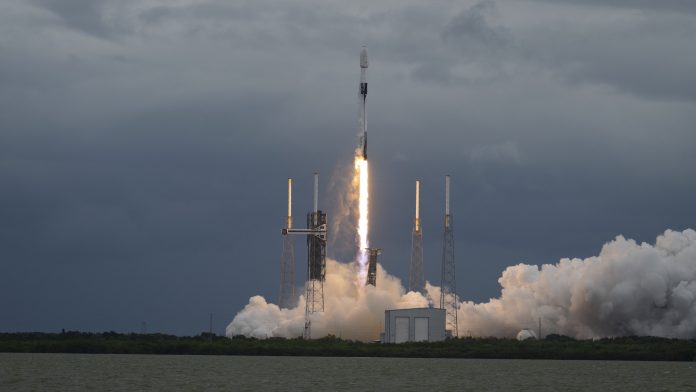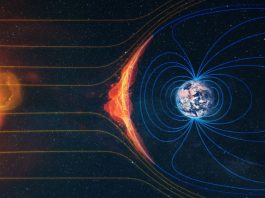The European Space Agency (ESA) has launched its first planetary defence spacecraft, the Hera mission.
Designed to enhance our understanding of asteroid deflection, Hera embarks on a groundbreaking journey to a binary asteroid system, 65803 Didymos, and its smaller moonlet, Dimorphos.
This ambitious Hera mission, developed under ESA’s Space Safety programme, aims to sharpen the kinetic impact technique—an innovative method of asteroid deflection—by collecting crucial data that could one day make Earth safer from asteroid impacts.
ESA Director General Josef Aschbacher commented: “Planetary defence is an inherently international endeavour, and I am really happy to see ESA’s Hera spacecraft at the forefront of Europe’s efforts to help protect Earth. Hera is a bold step in scaling up ESA’s engagement in planetary defence.”
Hera’s unique target: The Didymos-Dimorphos system
Hera is bound for a one-of-a-kind target: the Didymos binary asteroid system. While Didymos is the larger asteroid, the mission’s primary focus is on Dimorphos, the smaller moonlet.
In 2022, NASA’s Double Asteroid Redirection Test (DART) successfully altered Dimorphos’ orbit through a kinetic impact, marking the first time humans have intentionally shifted an asteroid’s trajectory.
This historic event reduced Dimorphos’ orbit around Didymos by 33 minutes. However, despite this success, many questions remain unanswered, and Hera aims to provide a more detailed analysis of this cosmic deflection.
Dimorphos is the smallest celestial body ever visited by a space mission, making the Hera mission an unprecedented opportunity.
Binaries, which make up 15% of all known asteroids, have never been studied in detail, adding to the mission’s scientific significance.
Once Hera reaches its destination in 2026, it will gather critical data, including the crater size left by DART’s impact, the structural composition of Dimorphos, and the exact mass of the asteroid. This information is vital for developing a more reliable planetary defence strategy.
Cutting-edge technology
Hera will do more than just observe. The spacecraft is packed with advanced technology, including two shoebox-sized CubeSats—Milani and Juventas—that will perform a range of deep-space experiments.
These miniature satellites will fly closer to the target asteroid, navigating in ultra-low gravity to collect additional data.
Milani, built by Italian industry, will analyse the mineral composition of Dimorphos and surrounding dust, while Juventas, developed by a Luxembourg-led consortium, will conduct the first-ever subsurface radar probe of an asteroid.
In its final mission phase, Hera will attempt to navigate autonomously around the Didymos system, relying on visual tracking for ‘self-driving’ in deep space.
This experimental feature could prove vital for future space missions, enabling spacecraft to operate independently in environments where real-time control from Earth is impractical.
Hera’s journey: Two years to impact
Hera’s journey is just beginning. Launched from Cape Canaveral on a SpaceX Falcon 9 rocket, the spacecraft is now in a two-year cruise phase to its destination.
In March 2025, Hera will perform a flyby of Mars, using the planet’s gravity to boost its speed toward Didymos. During this flyby, Hera will also study the Martian moon Deimos, activating its instruments for the first time.
Upon arrival at Didymos in autumn 2026, Hera will begin its main science and technology demonstration phase.
Over the course of six months, the spacecraft will conduct the most detailed survey yet of a binary asteroid system, collecting data that could revolutionise how we defend our planet from cosmic threats.
A step toward safer skies
The Hera mission represents a significant step forward in planetary defence. By deepening our understanding of the kinetic impact technique and conducting unprecedented scientific research, the mission could provide the tools needed to prevent future asteroid impacts.
Hera’s success will not only enhance our ability to protect Earth but also pave the way for future space missions that operate in complex, low-gravity environments.
As it continues its journey through space, the Hera mission is a symbol of humanity’s growing ability to safeguard the planet from celestial threats.









